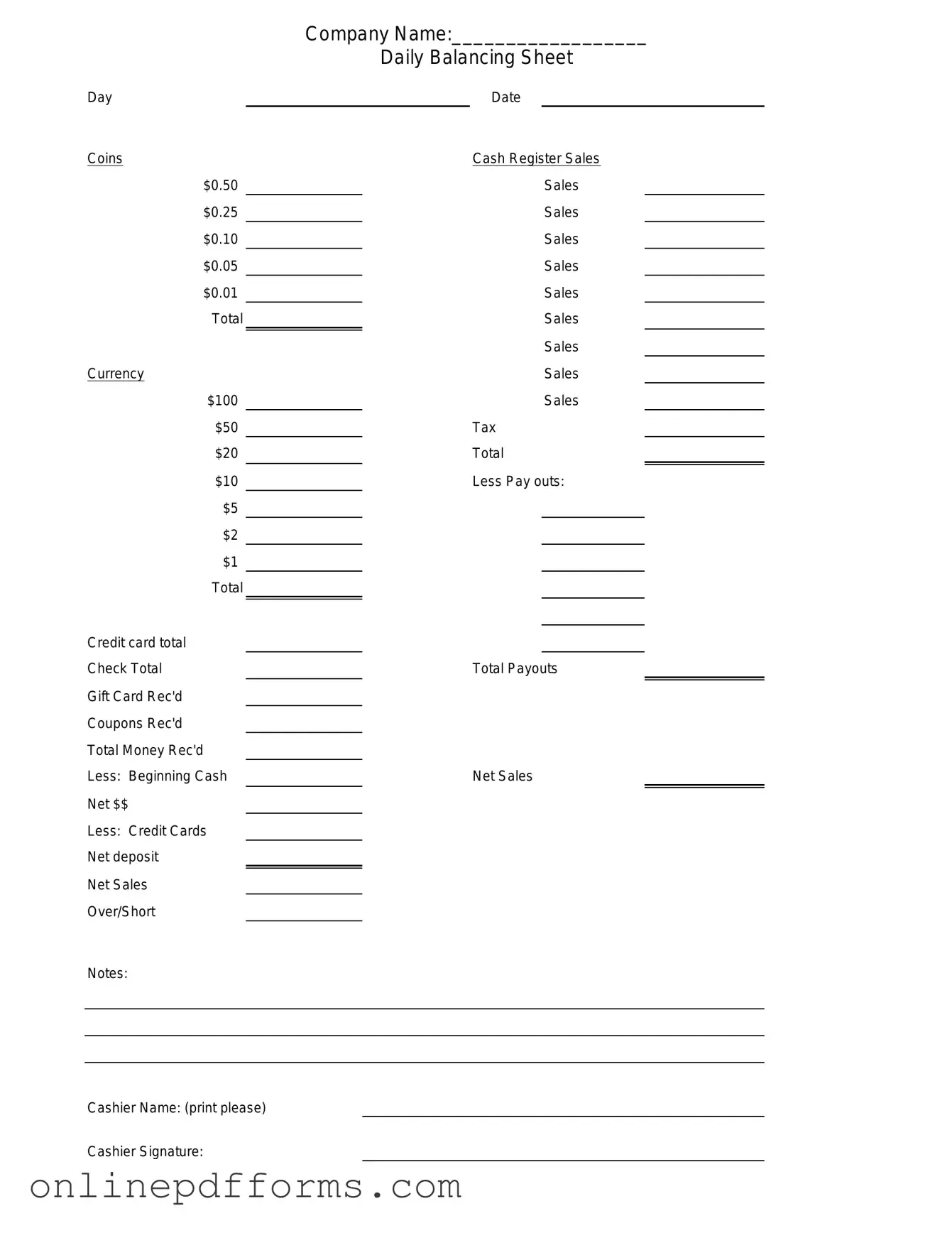The Cash Register Reconciliation Form serves a similar purpose to the Cash Drawer Count Sheet. Both documents are designed to ensure that the cash on hand matches the sales recorded during a specific period. The reconciliation form typically includes sections for recording total sales, cash received, and discrepancies. By comparing the cash register totals with the actual cash, businesses can identify any errors or theft, ensuring financial integrity.
The Daily Sales Report is another document closely related to the Cash Drawer Count Sheet. This report summarizes the total sales made during the day and often includes breakdowns by payment method, such as cash, credit, and debit. While the Cash Drawer Count Sheet focuses specifically on cash, the Daily Sales Report provides a broader overview of all sales activities. Both documents are essential for tracking revenue and managing cash flow effectively.
The Petty Cash Log is similar in that it also tracks cash transactions, but it focuses on smaller, incidental expenses rather than sales. This log records each petty cash disbursement and replenishment, ensuring that the petty cash fund remains balanced. Like the Cash Drawer Count Sheet, it helps prevent mismanagement of funds and promotes accountability within the organization.
The Bank Deposit Slip is another document that shares similarities with the Cash Drawer Count Sheet. This slip is used when depositing cash and checks into a bank account, requiring an accurate count of the cash being deposited. Both documents necessitate careful counting and verification of cash amounts, making them vital for maintaining accurate financial records and ensuring that all cash transactions are properly documented.
The Cash Flow Statement provides a broader financial overview, detailing the inflow and outflow of cash within a business over a specific period. While the Cash Drawer Count Sheet focuses on cash on hand at a particular moment, the Cash Flow Statement tracks cash movements over time. Both documents are crucial for understanding a business's financial health and ensuring sufficient liquidity for operations.
The Expense Report is similar in that it documents cash outflows, detailing expenses incurred by employees or the business itself. While the Cash Drawer Count Sheet is concerned with cash on hand and sales, the Expense Report tracks how cash is spent. Both documents are essential for maintaining accurate financial records and ensuring that all cash transactions are accounted for.
In addition to the various financial documents mentioned, it's important to consider the legal aspects of financial power, such as granting authority through a General Power of Attorney. This type of document can be crucial for businesses, ensuring that someone can act on their behalf in significant matters. To learn more about how to create an effective General Power of Attorney, you can visit https://californiapdf.com/.
Finally, the Inventory Count Sheet, while primarily focused on physical goods, shares a common goal with the Cash Drawer Count Sheet: accuracy in financial reporting. This document tracks the quantity and value of inventory on hand, which can impact cash flow and sales. Both forms require diligent counting and verification to ensure that the business has a clear picture of its financial standing.
